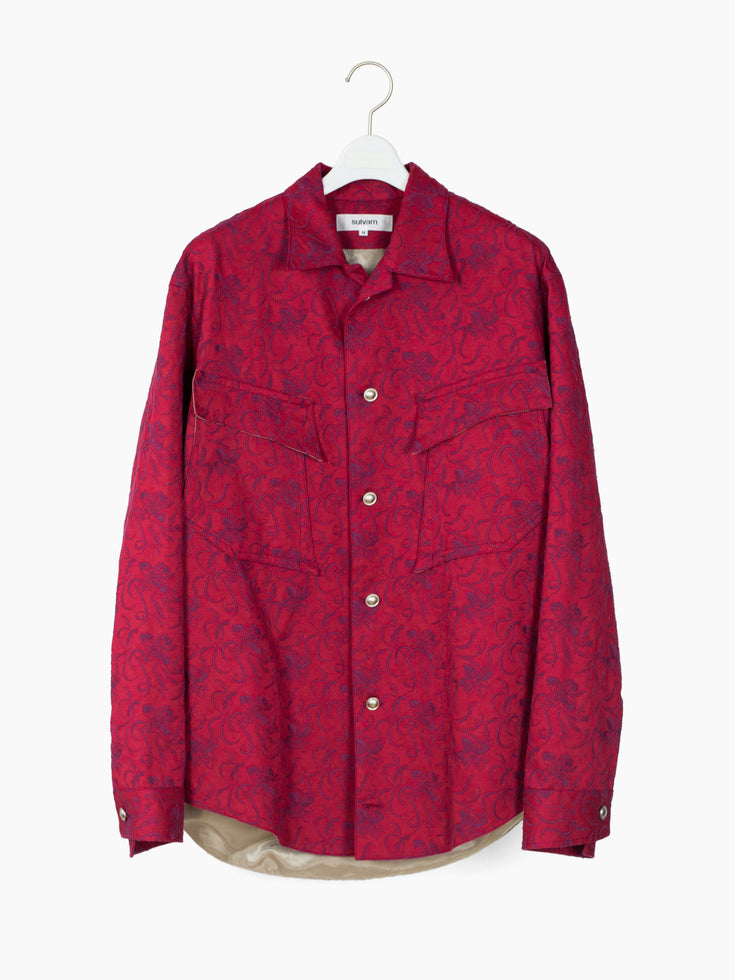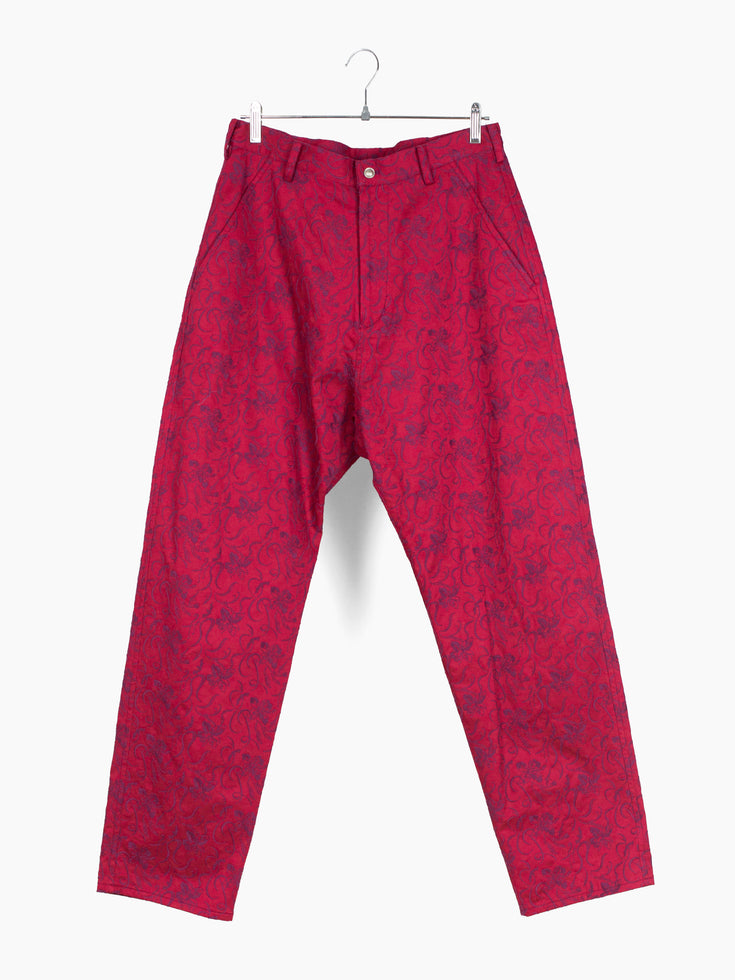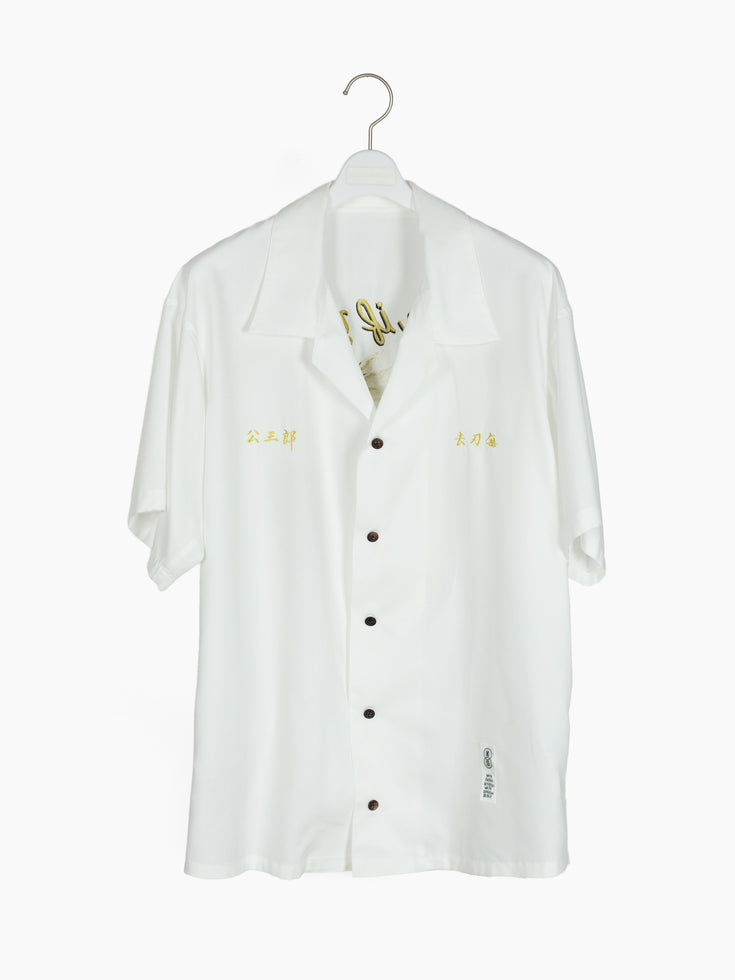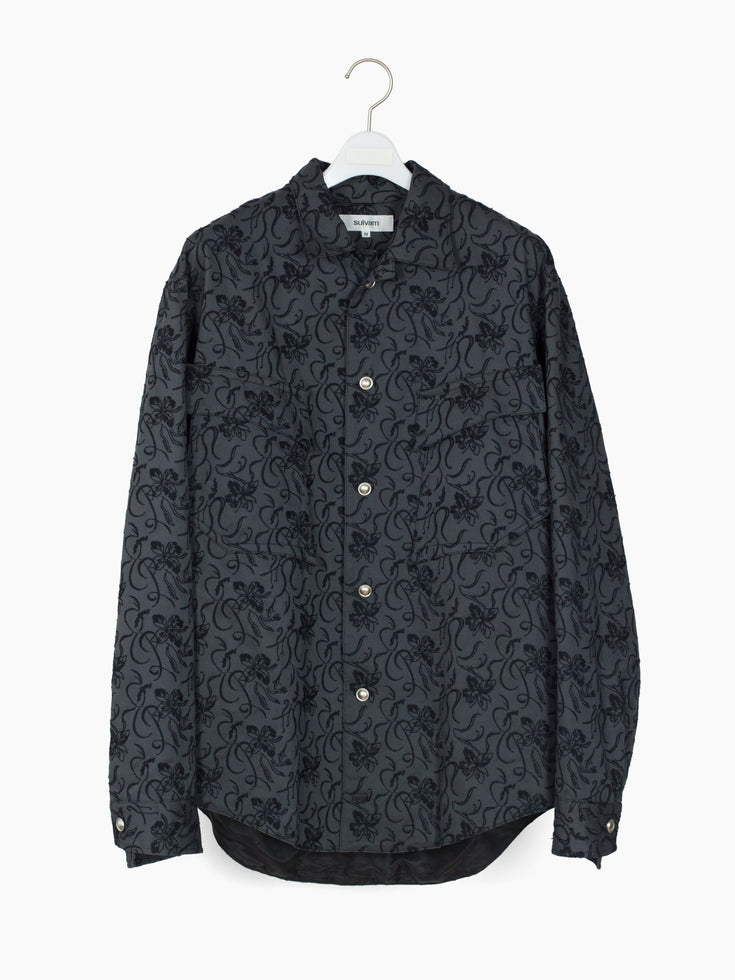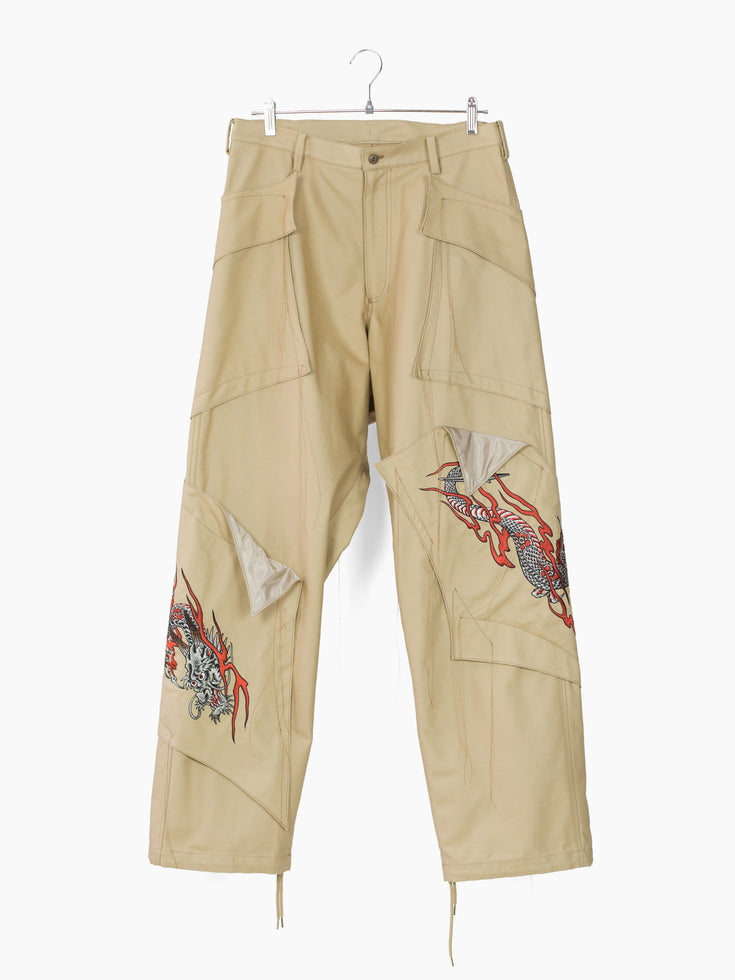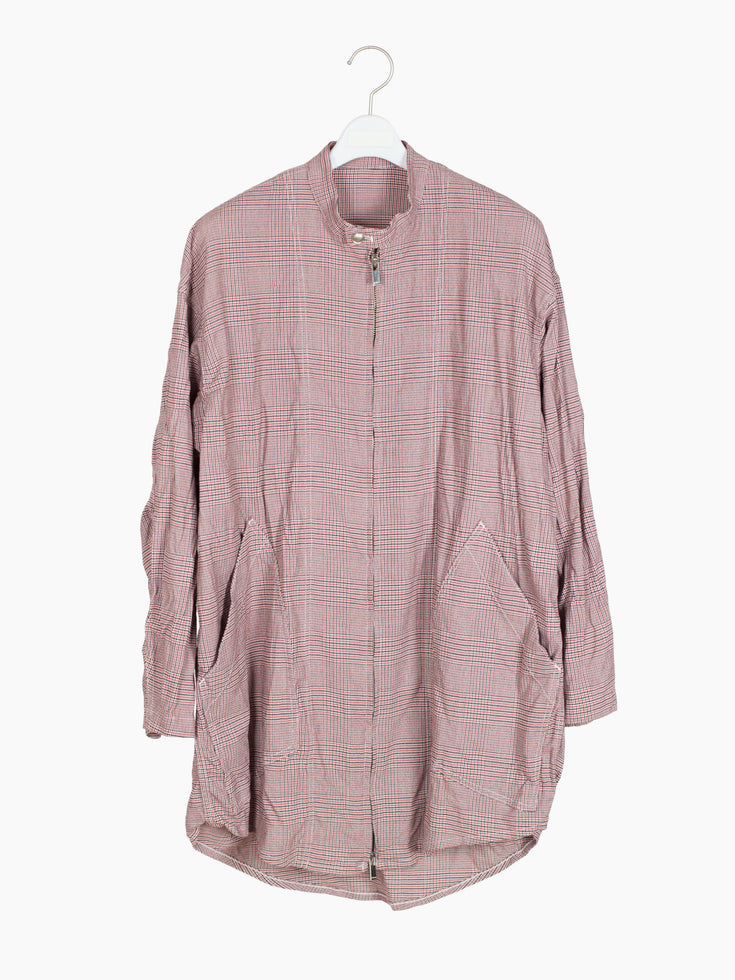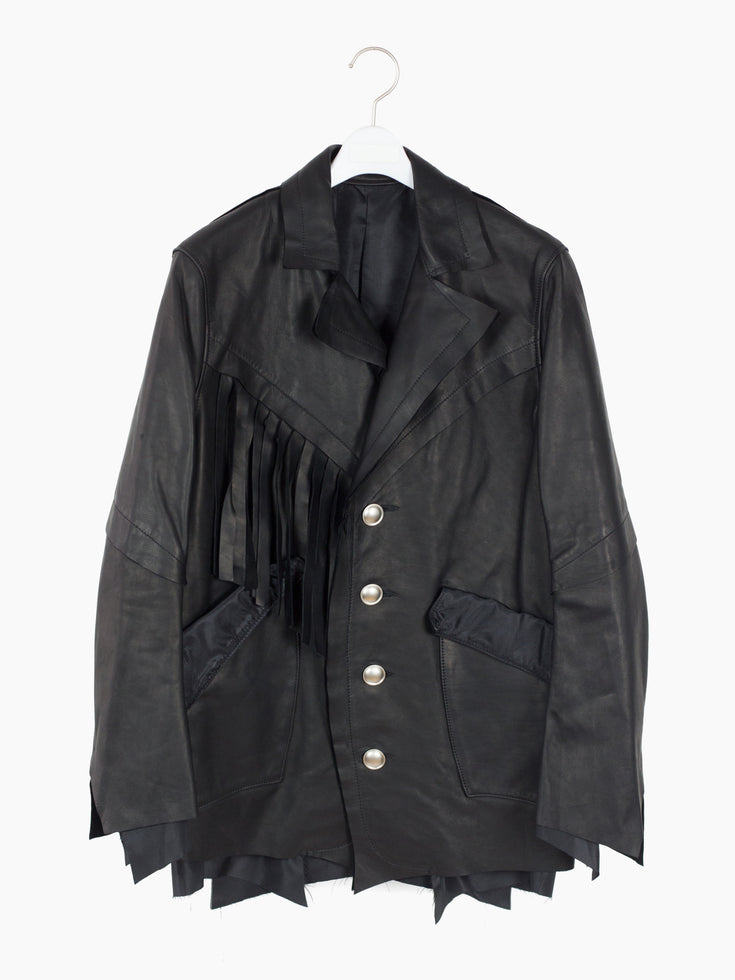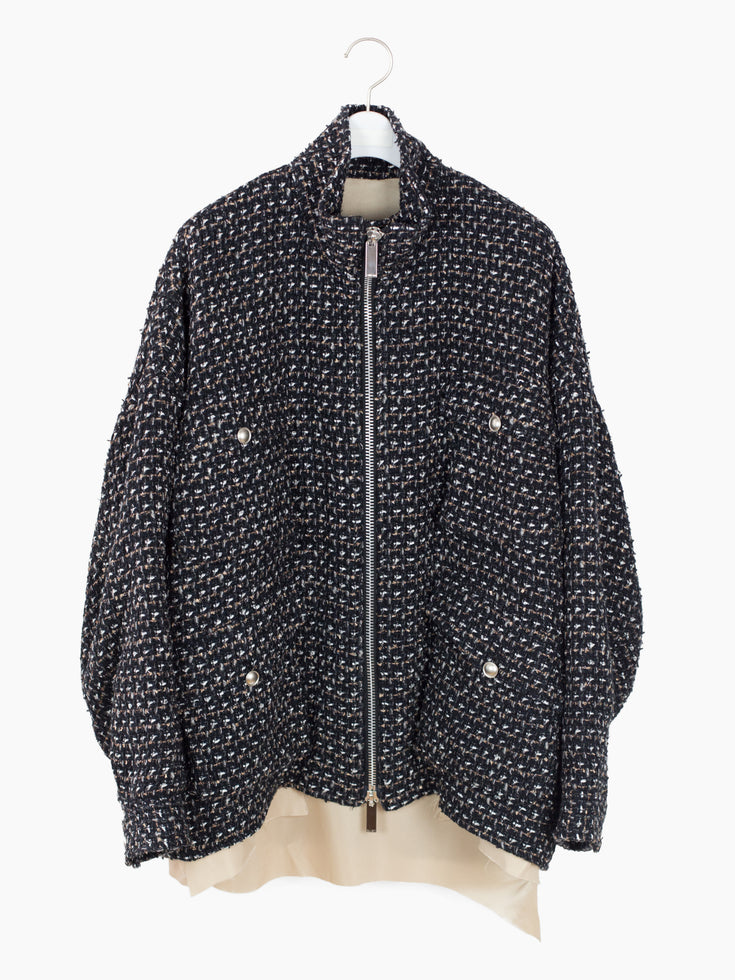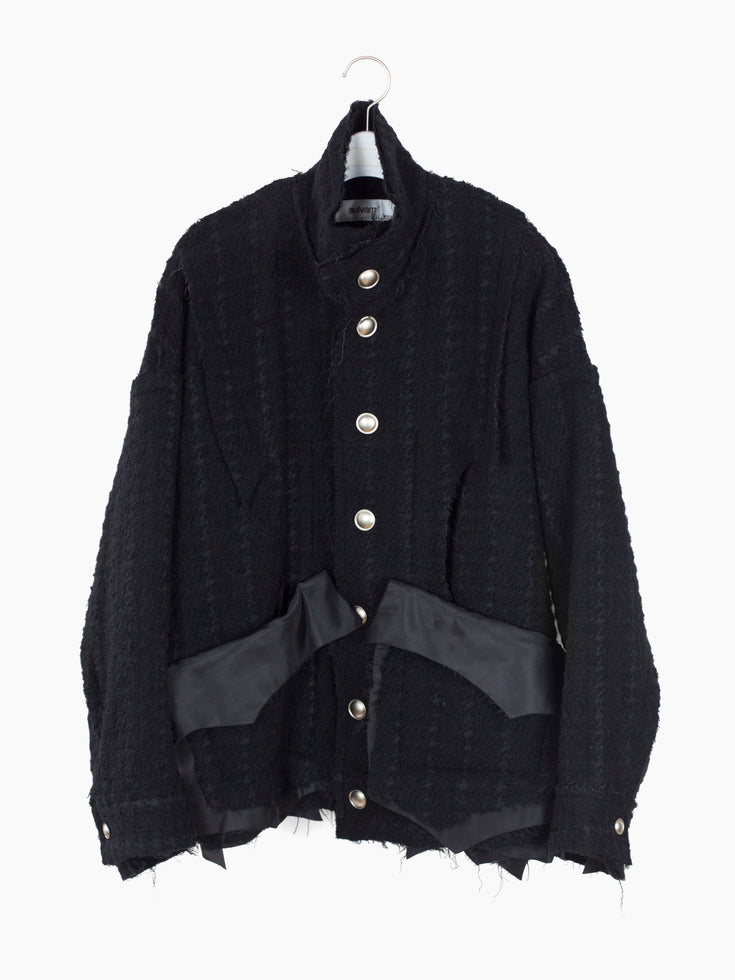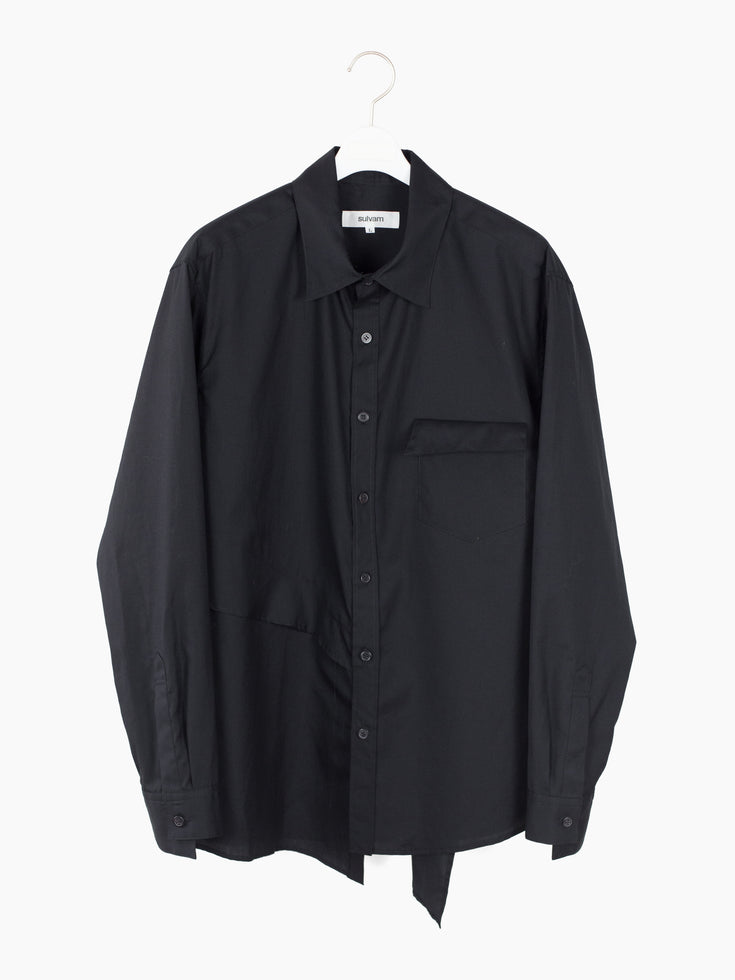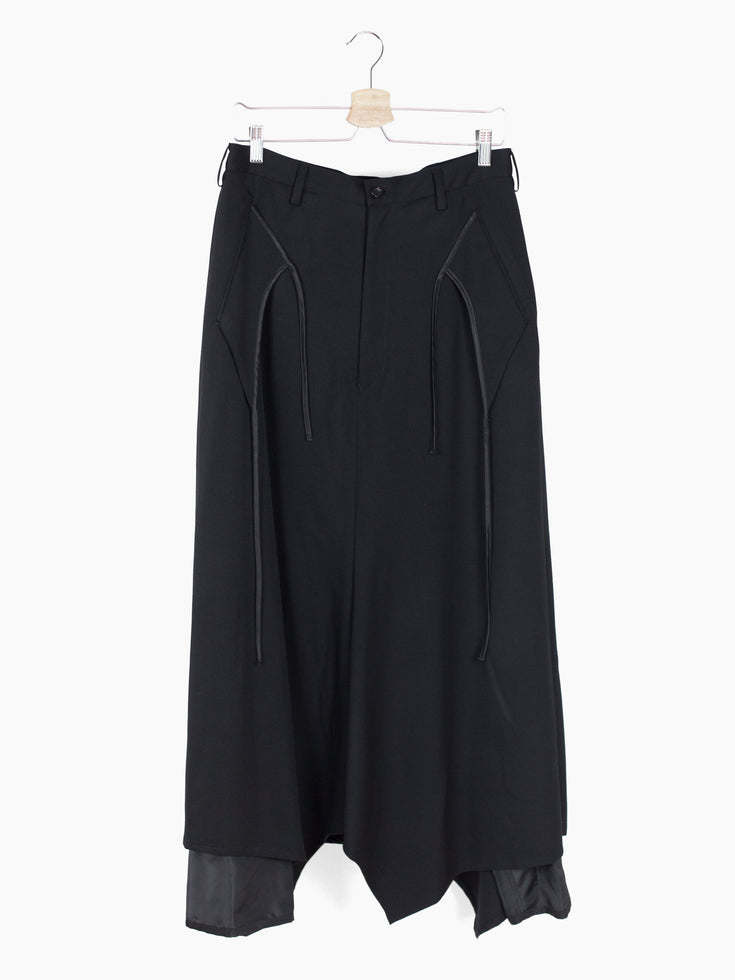Teppei Fujita founded Sulvam in 2014 after graduating from Bunka Fashion college and training as a patternmaker at Yohji Yamamoto. It's this craft and expertise in patternmaking that Teppei centers his work around, using it as both impetus and inspiration for design. He says in a quote published in Pen Magazine, "My creative process starts when I start drawing the pattern making line. For me, the pattern drawing paper is the design sketch which transform prototypes into actual clothing." This focus might seem to run counter to the deconstructed and raw look of the garments, but artfully executed chaos (i.e. trailing stitching, raw edges and selectively 'unfinished' construction) requires mastery of the craft.
The pattern-as-sketch practice yields garments that do indeed look like they are the canvas. Contrast topstitching often snakes, curves, and intersects, the organic geometries making the lines look like they've been drawn on fabric by hand. Beyond being just decorative, the stitching ingeniously serves the functional purposes of reinforcing pocket openings, attaching lining panels, and even securing insulation as quilt stitching. At other times, the random darting on blazers, shirting and trousers read as short and quick pencil strokes. Though having the look of being drawn in 2D, their affect is unpredictable and dynamic when worn. The raw shapes also reflect a drawn sensibility, with waistcoats featuring jutting, asymmetrical stepped hems and pockets cut large, angular, and off-kilter.
Another signature Sulvam design theme is the 'double,' seen most plainly in the AW19 runway where a pair of models in color variations of the same look walked side by side (possibly an homage to Undercover's Spring/Summer 2004 'Languid') but more subtlely in the way the relationship between lining and face fabric is explored. Teppei Fujita questions whether lining must match the outside 1-to-1 and uses this investigation as a way to create new forms. Blazers have their vent shifted to the side but the lining's remains at the center back, reversible coats are lined in high pile fleece cut in abstract-shaped patches that are stitched on like a collage. But the best example is probably the staple Sulvam skirt trouser, created by undoing, unfolding, then restitching a low crotch pant leg into a skirt with the original flat pattern on display and the 'pants' lining remaining underneath.
'Freedom' is the most important tenet within the Sulvam ethos according to Teppei. It is made to be ageless, genderless, and style-agnostic, and constructed/designed with self-expression and individuality at the fore. Wide boatneck tops with open armpits can be styled pulled to one side, as a cape with arms trailing. Super oversize cardigans have two sets of buttons, one set at the side seam for a cinched and wrapped look. Blazers with randomly placed buttons can be closed with any of them. Teppei lets the wearer have the final say in how a garment is going to look.
All of this gives Sulvam clothing an abstract and surreal atmosphere, an almost removed from reality quality with its rawness and eccentricity that is just barely grounded with the elements that remain untouched. In this way, the Sulvam visual universe is like a reflection of the stylistic tribes you can see everyday on the street but one fashion step removed. You recognized the suits, the chore coats, the jeans...but they've been flipped, twisted, slashed, and remade until it feels like you're peering into a whole other world.
